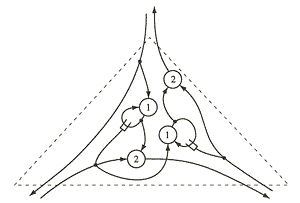Difference between revisions of "Narrow relational network notation"
Jump to navigation
Jump to search
m (made correction(s) to citation format) |
m (minor correction) |
||
| Line 20: | Line 20: | ||
*[http://www.ruf.rice.edu/~lngbrain LangBrain]. | *[http://www.ruf.rice.edu/~lngbrain LangBrain]. | ||
*[[Sydney M. Lamb|Lamb, Sydney M.]] 1999. Pathways of the Brain: The Neurocognitive Basis of Language. Amsterdam: John Benjamins. | *[[Sydney M. Lamb|Lamb, Sydney M.]] 1999. Pathways of the Brain: The Neurocognitive Basis of Language. Amsterdam: John Benjamins. | ||
| − | *"Language as a Network of Relationships". In: [[Sydney M. Lamb|Lamb, Sydney M.]] | + | *"Language as a Network of Relationships". In: [[Sydney M. Lamb|Lamb, Sydney M.]]. 2004. Language and Reality: Selected Writings of Sydney Lamb. London: Continuum. |
Latest revision as of 02:08, 15 October 2017
Relational networks can be drawn in either compact or narrow relational network notation. Narrow notation shows greater detail. All lines in narrow notation are one-way.
Narrow network notation allows more precision in describing nections. In narrow notation, connections are directed, so the nection boundary may be precisely located. Each external connection then is defined to be part of its source nection, but not of its destination nection.
Narrow notation also allows definition of a possible node structure for nodes which in compact notation look but aren't simple.
Example
Here is an ordered AND in narrow notation:
Here we also see the use of inhibitory blocking elements, which are a special type of junction node.
Sources
- LangBrain.
- Lamb, Sydney M. 1999. Pathways of the Brain: The Neurocognitive Basis of Language. Amsterdam: John Benjamins.
- "Language as a Network of Relationships". In: Lamb, Sydney M.. 2004. Language and Reality: Selected Writings of Sydney Lamb. London: Continuum.
